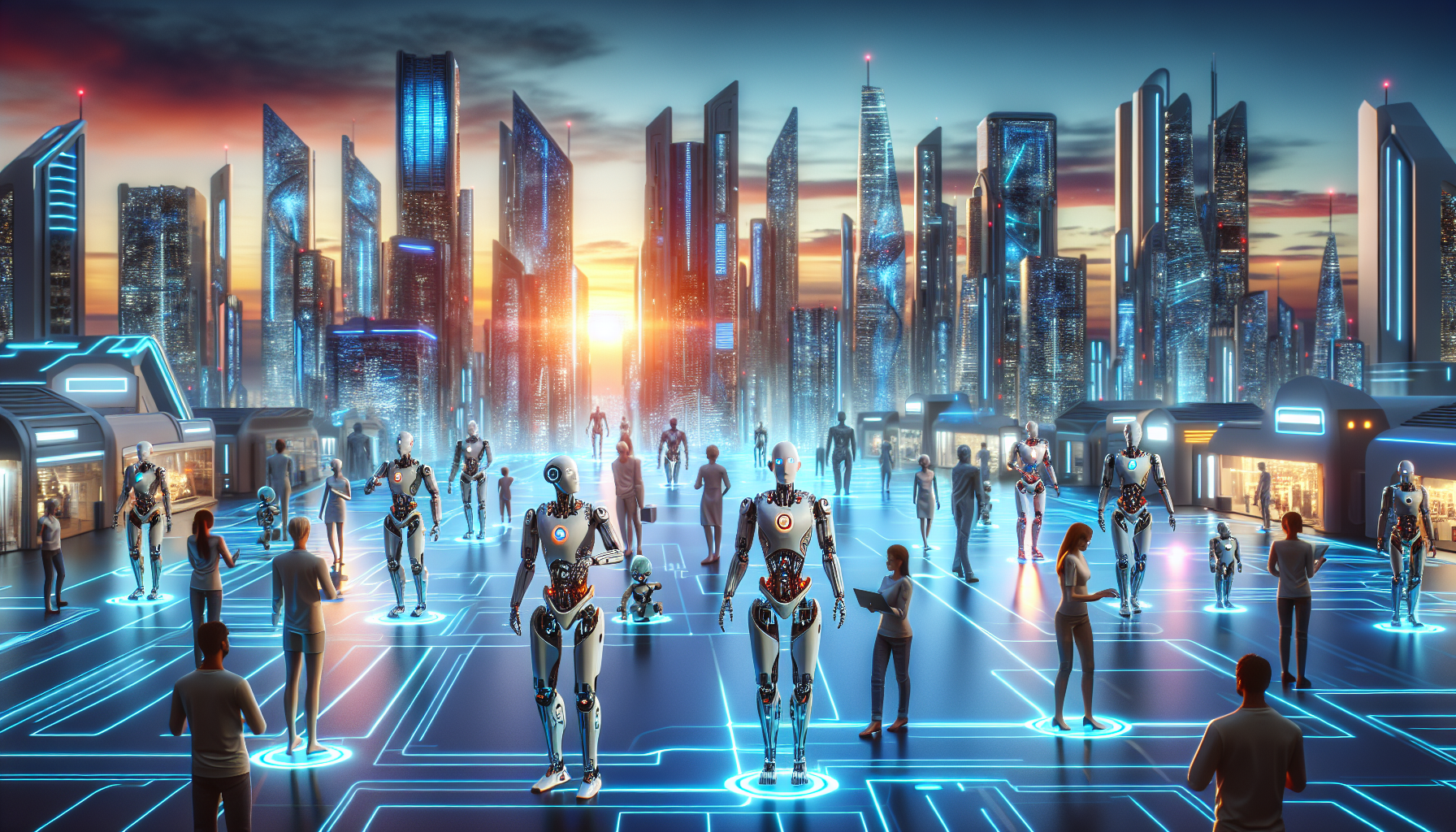The Evolution of Humanoid Robots
A Brief History
The concept of humanoid robots isn’t new; it dates back to ancient civilizations where myths and stories spoke of mechanical beings. However, the modern journey began in the mid-20th century with pioneers like George Devol and his creation of the first programmable robotic arm. Fast forward to today, and we see significant advancements that have turned those early dreams into reality. Companies and research institutions are investing heavily in robotics, making humanoid robots an increasingly visible part of our lives.
The Mechanics Behind Humanoid Robots
Building a humanoid robot is no simple feat; it requires intricate engineering and advanced technologies. These robots are designed to mimic the human form, featuring two arms, two legs, a torso, and often a head. This design allows them to perform tasks that require fine motor skills, which are crucial for interaction with humans and the environment.
<h4 Key Components
Actuators
Actuators are pivotal to a humanoid’s movement. They serve as the robot’s muscles, converting electrical signals into movement. Hydraulic, pneumatic, and electric actuators are commonly used, each with its strengths and weaknesses.
Sensors
Humanoid robots are equipped with various sensors that allow them to perceive their surroundings. These include cameras for visual input, microphones for sound detection, and tactile sensors for touch. The data collected by these sensors enables the robots to react appropriately in real time.
Artificial Intelligence
At the heart of a humanoid robot’s intelligence is Artificial Intelligence (AI). This technology allows robots to learn from their experiences, making decisions and improving their performance over time. Natural Language Processing enables these machines to understand and generate human language, adding a layer of interactivity.
The Applications of Humanoid Robots
Humanoid robots are not just fascinating technological wonders; they have a myriad of applications across various sectors.
Healthcare
In healthcare, humanoid robots like Pepper and Sophia are being utilized for patient interaction. They can provide companionship to the elderly, assist in rehabilitation, and even help manage chronic illnesses through constant monitoring.
Telepresence Robots
One exciting application is in telemedicine. Doctors can remotely interact with patients through telepresence robots, which offer mobility and the ability to convey non-verbal cues, enhancing the doctor-patient relationship.
Education
In educational settings, humanoid robots serve as tools for teaching and learning. They can assist in language learning, provide tutoring, and engage students in hands-on activities that enhance learning through interaction.
Programming and Robotics Education
Schools are increasingly incorporating humanoid robots into their curriculum, allowing students to explore coding and robotics. This hands-on experience is invaluable for developing the next generation of engineers and programmers.
Service Industry
Humanoid robots are making waves in the service industry as well. They can greet customers, provide information, and even take orders at restaurants. Companies like SoftBank Robotics with their robot Pepper are leading the charge, improving customer experience and generating buzz.
Hospitality Robots
In hotels, robots can assist guests with check-ins, deliver room service, and even provide concierge services. This not only streamlines operations but also adds a unique twist to hospitality.
The Challenges Facing Humanoid Robots
Despite their promise, the rise of humanoid robots comes with its set of challenges.
Cost Considerations
Building sophisticated humanoid robots can be prohibitively expensive. Limited production and high research and development costs contribute to this. Many organizations struggle to justify the costs, especially when considering traditional methods of service delivery.
Public Perception and Trust
Another significant hurdle is the public’s perception. While some marvel at the advancements in robotics, others feel apprehensive. The uncanny valley effect—where robots that closely resemble humans evoke unease instead of empathy—poses a challenge in widespread acceptance.
Ethical Concerns
The ethical implications of humanoid robots also merit discussion. The prospect of robots interacting closely with vulnerable populations like children and the elderly raises questions about privacy, consent, and the emotional attachment people may develop with machines.
The Future of Humanoid Robots
The future seems bright for humanoid robots, as ongoing research continues to push the boundaries of what these machines can achieve.
Advancements in AI
Near-future developments in AI could enhance the capabilities of humanoid robots. More sophisticated algorithms may allow them to understand context better, making interactions smoother and more human-like.
Integration in Daily Life
As technology evolves, the integration of humanoid robots into daily life will likely become more seamless. Think of homes equipped with personal assistants that can do everything from cooking to personal training!
Collaborative Robots (Cobots)
Collaboration is key in the future landscape of humanoid robots. Collaborative robots, known as cobots, are designed to work alongside humans rather than replace them. These robots could revolutionize workplaces by taking on repetitive tasks, allowing humans to focus on more creative and strategic work.
Enhancing Human Capabilities
Rather than seeing humanoid robots as competitors, the narrative is shifting toward them being tools that enhance human capabilities. Whether in labor, healthcare, or education, these robots have the potential to create a more efficient and enriching world.
Conclusion
While the rise of humanoid robots is surrounded by excitement and innovation, it is essential to remain mindful of the ethical, societal, and technological challenges. As we embrace these advancements, understanding and addressing these challenges will determine how successful humanoid robots become in our everyday lives. The journey is only just beginning, and the possibilities are as vast as the imagination allows.
